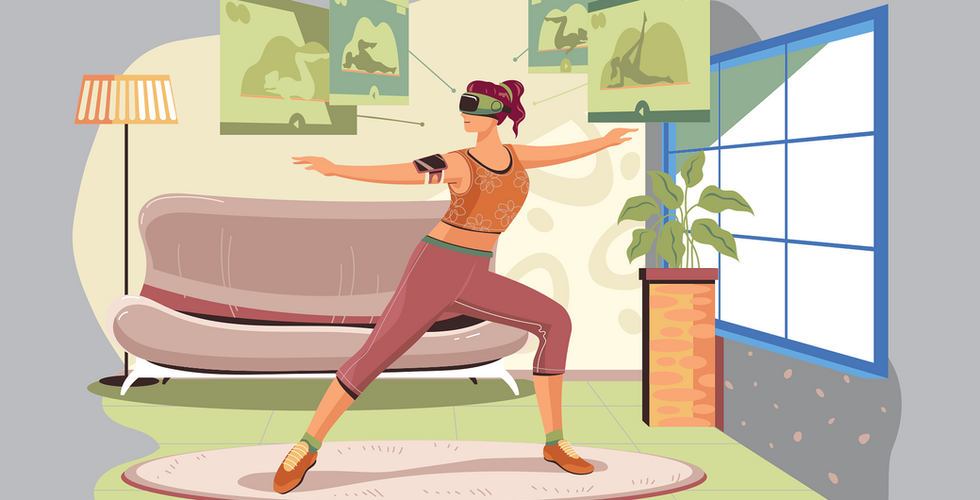Mindful Tech: How Virtual Reality is Revolutionizing Mental Health Therapy
- Mackenzie Heath
- Feb 4, 2024
- 3 min read
Updated: Feb 5, 2024
In 2024, boundaries are becoming increasingly blurred between the physical and the virtual realms. It can be hard to decipher what we can and can’t trust these days, but virtual reality (VR) is quickly developing into a prosperous tool for mental health, used by professionals inside and outside the clinic. Now, we don’t have to simply imagine a space where the mind can transcend its limitations, or where healing takes place in a virtual landscape. Researchers and professionals are welcoming VR as a groundbreaking tool, redefining our perspective of mental health treatment.
What is Virtual Reality?
Virtual reality headsets design a three-dimensional, computer-generated environment in front of the eyes, originally introduced by Ivan Sutherland and student Bob Sproull in 1968. It was a new and welcome discovery in the age of electronics that we are now able to expand on and use for many benefits.
“This technology introduces fresh possibilities for addressing problematic behaviors affecting mental health. Notably, VR is now more affordable, and thanks to mobile phone technology. . . VR is not confined to a specific location and can be conveniently used at work, home, or on the go.” (Jerdan, 2018)
How is Virtual Reality used for Therapy?
VR was originally implemented in the mental health scape in the 1990s by Skip Rizzo, one of the first minds geared towards its effectiveness in aiding psychological well-being and psychosocial deficits. Today, Rizzo is the Director for Medical Virtual Reality at USC and is “designing VR scenarios to address social. . . interaction in persons with autistic spectrum disorder [and examining VR’s capability in] training emotional coping skills with the aim of preparing service members for the stresses of combat.” (USC, 2021) Rizzo had also received the APA’s Award for Outstanding Contributions to the Treatment of Trauma in 2010 for his work using virtual reality-based exposure therapy to treat PTSD.
There are two ways, as of 2024, that we use VR headsets in therapy. We call them Virtual Reality Therapy (VRT) and Virtual Reality Exposure Therapy (VRET).
VRT is a form of VR mental health treatment that includes talking to a virtual avatar and a professional, licensed therapist must be involved for it to be considered therapy. This can also be group therapy, and promises anonymity to the users.
VRET is a form of VR therapy that includes simulating a realistic environment with hopes of aiding difficult or perhaps traumatic social and emotional scenarios. This is the study that Skip Rizzo has practiced in the 90’s, influencing many to follow in his footsteps. In fact, the iconic TV show 'Shameless' showcased this therapy technique by having one of their agoraphobic characters experience shopping in a grocery store in virtual reality. You can find a clip here.
Virtual Reality's Success in Mental Aid
Now that we know how we are using VR… why are we using it? The easy answer is that we know that it works. VR’s comfort and simplicity just makes it a more exciting and, in turn, more effective approach to rehabilitation of the mind. Virtual reality is an escape from the physical realm, while still being optimized as a safe, fun, and healing environment for the client. Therapists and researchers have collaborated to measure its success and found this:
“Virtual reality therapy in the form of VRET has a reported success rate of between 66% and 90% for those with PTSD [and] has also been shown to significantly help with pain relief in place of medications. In one study. . . burn victims were transported to a snowy world, interacting with snowmen and throwing snowballs. This reduced their physical pain between 35% and 50%.” (Laurence, 2023)
Conclusion
Now is the time to experience and to learn with VR, and clinicians are taking notice. These days, there are growing numbers of VR headsets being placed in hospitals, clinics, and more. This technology is curiously new to the mental health world, but virtual reality can become our reality - helping us shape our minds, bodies, and souls.
Written by Mackenzie Heath
Credits:
Jerdan, Shaun W, et al. “Head-Mounted Virtual Reality and Mental Health: Critical Review of Current Research.” JMIR Serious Games, JMIR Publications Inc., Toronto, Canada, 7 June 2018, games.jmir.org/2018/3/e14.
USC, Institute of Creative Technologies, et al. “Albert ‘Skip’ Rizzo.” Institute for Creative Technologies, 1 Dec. 2021, ict.usc.edu/about-us/leadership/research-leadership/albert-skip-rizzo/.
Laurence, Emily. “Virtual Reality Therapy: Everything You Need to Know.” Forbes, Forbes Magazine, 19 Oct. 2023, www.forbes.com/health/mind/virtual-reality-therapy/.
















Comments